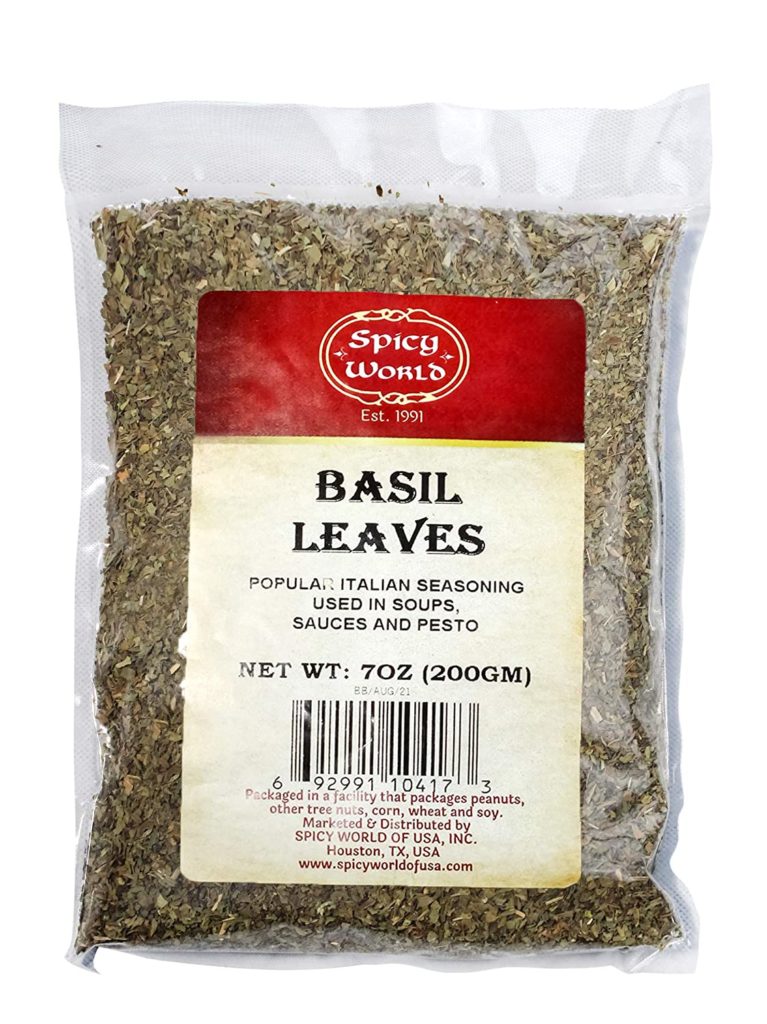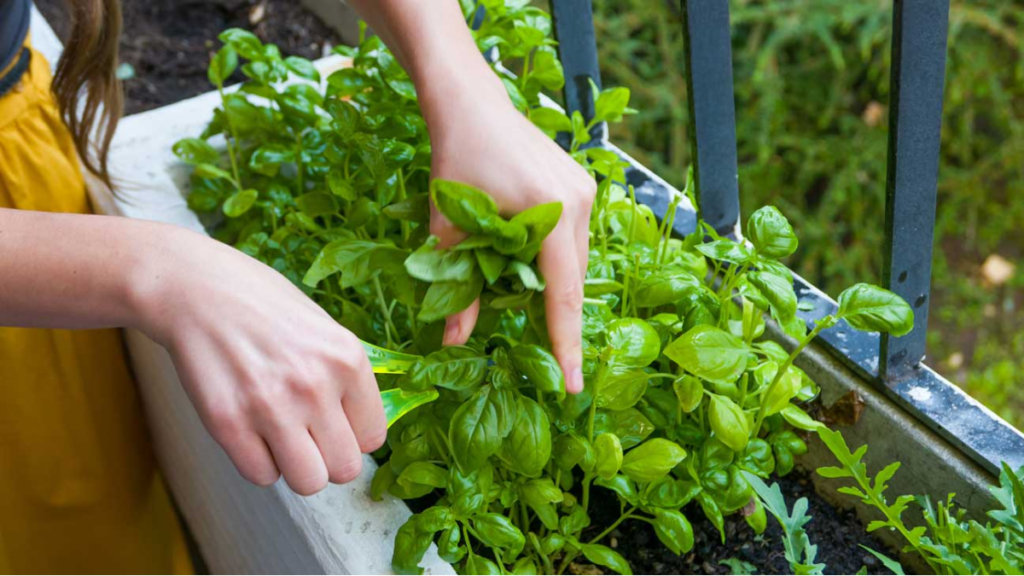Basil is a leafy green plant with a strong flavor in Asia and Africa. It’s a member of the mint family, and there are numerous kinds. This aromatic herb is popular as a food flavoring, but it’s also used in teas and supplements, and it may have a variety of health advantages. Basil is widely used to treat stomach issues like spasms, loss of appetite, intestinal gas, diarrhea, constipation, and other ailments. Still, there is no scientific proof to back up these claims.
Basil is a leafy green plant with a strong flavor in Asia and Africa. Basil is used in traditional Chinese medicine, Ayurvedic medicine, and other holistic health systems, in addition to being a common folk treatment for symptoms including nausea and bug bites. Scientists are now researching the therapeutic properties of basil. Instead of whole leaves, basil extracts or essential oils, which include full concentrations of plant components, are usually evaluated.
What is Basil?
Basil is a mint-family plant crucial in Italian cooking, but it is also utilized in Thai, Indonesian, and Vietnamese cuisines. It’s the major component in classic pesto, but it’s also a popular flavoring for tomato-based pasta sauces. Basil is a herb that grows year after year and is usually green in color, it has a spicy flavor and a lovely, sweet scent. Basil leaves are broad, delicate, and smooth, with a pattern of veins; they are the most commonly utilized component of the plant in cooking. It’s a typical addition to kitchen gardens and a simple herb to grow at home.
Most Common Varieties
There are wide different varieties:
- Sweet basil: The most widely grown, popular basil, renowned for its use in Italian dishes. Commonly sold dried in supermarkets and has a licorice-clove flavor.
- Bush or Greek basil: Has a strong aroma but mild flavor so that it can be substituted for sweet basil. Forms a compact bush with small leaves and grows well in a pot.
- Thai basil: Has an anise-licorice flavor and is commonly used in Thai and Southeast Asian dishes.
- Cinnamon basil: Native to Mexico. Has a cinnamon-like flavor and scent. Commonly served with legumes or spicy, stir-fried vegetables.
- Lettuce basil: Features large, wrinkled, soft leaves with a licorice-like flavor. Works well in salads or tossed with tomatoes and olive oil.
Health Benefits of Basil
- Basil is high in antioxidants and has a variety of health benefits. They can aid in preventing cancers such as lung cancer, skin cancer, liver cancer, and oral cancer.
- It contains eugenol, which helps to lower blood pressure, and it may also aid in the treatment of type 2 diabetes. It contains essential oils, which can help lower cholesterol, and magnesium, which can help with blood flow.
- Basil also has anti-inflammatory properties that can aid in treating inflammatory diseases. Basil contains antioxidants, which help keep your skin looking young by reducing wrinkles and acne.
- Basil leaves have anti-stress, anti-anxiety, and anti-depression properties and the ability to think more clearly, sleep better, and reduce the risk of dementia.
What does it Taste Like?
The flavor of basil varies according to the cultivar. Sweet basil has a light, peppery scent and a tinge of mint in its flavor. Other variants have a citrus and spice flavor, and Thai basil has a strong licorice flavor that is more savory.
Basil vs. Oregano – How do They Differ?
Basil and Oregano are frequently misunderstood. They have a lot of similarities, so you’re not alone if you can’t tell them apart. Basil and Oregano differ in a few ways, and you can tell the difference by looking at the leaves and flowers. Furthermore, their flavor profiles are vastly different. Let’s look at some quick tips for telling the difference between basil and Oregano.
Appearance
Basil
The stem of regular basil is light green, and it’s completely smooth. The stems of basil vary because there are over 60 varieties. The stems of some basil varieties, such as Thai basil, are purple or brown, but the common sweet basil is light green.
Oregano
Oregano has a dark green or brown stem, and it is quite hairy, which means the stem is covered in fine tiny hairs.
Leaves
Basil
The common basil has smooth oval leaves that grow up to around 4 inches. They curl downwards and are dark green and release an intense aroma when rubbed.
Oregano
Oregano leaves are ovular and have a pointed end, and they grow up to 2 inches. The most common oregano variety has leaves that have fine, tiny hair around the edges.
Flowers
Basil
Basil flowers are tiny and tubular. The common basil has white flowers, while the other varieties have flowers that are different in color. There are some varieties of basil that also have pink or purple flowers.
Oregano
Oregano flowers are either pink or light purple. Oregano flowers grow in a bunch like tiny dome-shaped flowers, unlike the basil flowers that grow single.
It’s important to remember that when heating is involved, both of these fresh herbs should be added near the end of your cook. When these herbs are overheated, they become black and crispy, and their flavor is lost. There may be a few exceptions, such as Holy basil, which releases flavor when heated.
Cooking with Basil
Basil should be rinsed under running water and wiped dry before use. The leaves are usually ripped, sliced into chiffonade, or finely diced after being removed from the stem. They can also be used whole as a topping or garnish for pizza. The larger stems and stalks should be eliminated since they are bitter, while the smaller stems can be used in meals. The stems and large veins, on the other hand, contain ingredients that cause pesto to turn brown and black, so remove them before making the herb sauce.
Fresh basil should be added towards the end of the cooking process for the most strong taste. Basil’s volatile oils will disperse if exposed to high heat for an extended period. If using dried basil, add it towards the beginning of the recipe to allow the herb to soften and infuse with the other ingredients. Basil is an excellent choice for flavoring infused oil. Basil blossoms can also be made into basil flower oil or basil flower tea.
Basil Substitutes
Here are some suggestions if you’re making something less iconic:
- Oregano works in a pinch and brings in Mediterranean-style flavor
- Tarragon can stand in, though it has a stronger anise flavor
- Mint works well since it’s in the same herb family, but the flavor has more refreshing peppermint notes
Where to Buy Basil?
Fresh basil can be purchased in the produce area of most supermarkets, wrapped in plastic clamshell containers, or sold as whole plants. Look for vibrant green leaves that aren’t yellowing or drying on the edges when purchasing fresh basil. Dried basil comes in jars and can be purchased in the spice section. Basil is simple to grow, whether in the garden or a pot on the windowsill. By pinching back the blossoms, you’ll encourage additional leaf growth, and, by the end of the season, you’ll have big plants.
Dried Basil Leaves
Features:
How to Buy and Grow Basil?
Fresh basil has a richer flavor, while dried basil is less expensive and easier to use. Basil can also be found in the freezer section of supermarkets, frozen as recipe-portioned cubes.
The most common kind is sweet basil, but other varieties can be found at farmers’ markets or ethnic shops, such as Asian food stores. You might also try growing your own. Basil may be grown for at least two months, with nightly temperatures over 60°F (15.5°C). Basil is cold-sensitive and likes to be in the light all day. Basil can be grown from a seed planted in dirt or a stem from another plant submerged in water until roots appear. Basil will thrive in a well-drained garden or patio planter.
Harvest basil leaves as needed, but avoid plucking them from the plants. Cut the stem at the bottom of the plant, leaving only two to four leaves on the plant, to encourage proper growth. To store fresh basil leaves for a few days, place fresh basil stems in a jar with tap water. It’s controversial whether you should keep fresh basil refrigerated because chilly temperatures can cause the leaves to discolor.
You can dry fresh basil leaves and store them in a jar with a tight-fitting lid if you have many. It’s best not to crumble the leaves until you’re ready to use them, as this helps to preserve their vital oils, aroma, and flavor.
Safety and Side Effects
When ingested in little amounts, basil is generally harmless, but there are a few precautions to take.
Basil leaves contain a lot of vitamin K, which aids with blood clotting. Blood-thinning medicines like warfarin may be affected by high intakes.
If you’re on a blood thinner, make sure you’re getting enough vitamin K every day so your doctor can keep track of your dosage. This may be more difficult if you consume dishes containing a lot of basil, such as pesto. Basil extracts, on the other hand, such as those available in supplements, might thin your blood, which can cause complications if you have a bleeding issue or are planning surgery.
Basil supplements should also be avoided by persons taking blood pressure or diabetic medications, as they may reduce blood pressure and blood sugar. Your doctor may need to reduce the dosage of your medication.
If you’re pregnant or attempting to conceive, stay away from holy basil. Holy basil supplements have been shown in animal tests to harm sperm and cause contractions during pregnancy. There are no recognized risks associated with breastfeeding. Though basil allergies are uncommon, a few incidences of persons reacting to pesto have been reported.
Conclusion
There are many different types of basil. While this herb does not have substantial nutritional value, it can add flavor to your food. Though holy basil is commonly used in herbal teas and supplements, research suggests that sweet basil may have similar health advantages, including stress reduction and blood sugar control. Keep in mind that more human studies on both forms of basil are needed.
Grow your basil and use it in sauces, salads, and soups; your taste buds will thank you. Basil is most commonly used in food, such as tomato sauce, pesto, and tablespoons of vinegar. However, it can also be sprinkled over salads and whole or diced tomatoes. To get the full taste out of the leaves, tear them rather than slice them.




